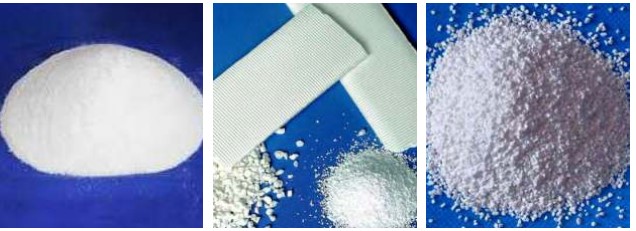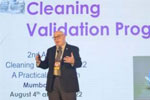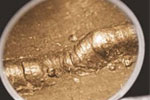
Granulation is a manufacturing process for making oral solid dosage form either in tablets or filled in capsules. Granulation such is classified as wet granulation and dry granulation.
In pharmaceutical applications the most common target is to increase the flowability of a powder or powder blend to enable the fast and homogeneous filling of a tablet press. The challenge is to produce tablets of constant weight and sufficient strength, while maintaining an even distribution of the Active Pharmaceutical Ingredients (API).
Wet granulation is a process technology which is well established for manufacturing of oral solid dosage forms, which is a batch process, thus involving multiple unit processes such as wet aggregate, drying and screening. It is a complex and expensive process, cost in terms of large space utilization, process time is longer and multiple types of equipment are needed for this process.
Whereas dry granulation is a continuous manufacturing process wherein a blend is compacted and after sizing of the particles, can be used for tablet compression.
Continuous dry granulation by roller compaction is a well-established process in pharmaceutical, chemical and life science industry, for a wide range of products without the need of additional ingredients such as binders, moisture, or lubricants.
Furthermore, dry granulation by roller compaction is used to eliminate dust, increase the bulk density, reduce the storage volume, improve handling and manipulate the dissolution properties. Its simple operations are efficient and automated, which can be scaled at a low cost.
Advantages of Roller Compactor
- Highest quality granulation
- Improved product flow ability
- Increased product bulk density
- Consistent granule hardness
- Uniform granule size
- Increased particle size
- Reduced dust in material
- Improved material handling
- Good for heat-sensitive material
- Good for moisture-sensitive material
- Reduced production time
Roller compaction can shorten the production time and reduce the production equipment, especially for the drugs that easily deteriorate by moisture and heat. This can improve the product quantity.
The roller compaction process is a continuous process, which means it is relatively easy to scale up and improve overall process efficiency while reducing the operation cost. Although it has all the benefits that the wet granulation process can provide, including improving material flow behavior and content uniformity, it does not require a drying stage, so it is suitable for use with compounds with a low melting point or rapid degradation after heating, making it a cost-effective manufacturing option.
Since no granulation liquid is required, it has advantages in dealing with physically or chemically water sensitive materials compared with wet granulation. Roller compaction can also reduce bulk to minimize which can also help reduce potential environmental and safety hazards.
Apart from the above advantages, the products which are moisture sensitive and have low bulk density, which cannot be handled in wet granulation, are apt for dry granulation. This is propelling the demand for dry granulation coupled with many products getting tech transferred to India for manufacturing and going off patent, which is making dry granulation methods popular.
To address the growing demands of dry granulation, it is recommended to have the below guidelines for simpler but effective operational performance:
- Unique Roll shape and Compaction Seal Design
- Horizontally arranged rolls with vertical screw feeding system
- Conical Hopper with vertical tapered feed screw
- Different type of Roller design
- Special construction of Rolls
- Dual roller Mounting Block
- De-aeration Hopper and Screws (Option)
- HMI Color Touch Screen Control System
- Roll cooling device
- 21CFR compliance with SCADA & Industry 4.0, suitable for pharma companies
Some of the basic features which most effective Roll Compactor’s employs are:
A) Constant force compaction – This is possible by robust Dual mounted roll design which ensures maintaining constant force through the compaction leading to uniform hardness, thickness and in turn the density is uniform.
B) Total Access for Cleaning – The rolls need not be removed from batch to batch. By the Hopper, auger, seals, side covers (on the compaction zone) removal, the rolls are at full access for cleaning.
You can clean by using a wet cloth or by pouring water and getting it drained. The Premill and granulation assembly can be removed out of the machine like the other parts as mentioned above for cleaning. Overall, the removal time is about 20 minutes, the cleaning time is your specific and the assembly time is about 20 minutes.
C) Vertical feeding of powder – This is through an auger and scrapper to avoid rat holes and applying the right type of auger, pushing the product down to about 1 mm above the Nip area. The process of feed, pre compact, de-aerate (push the air up) and then compact.
The machine comes with an inbuilt Rotary Granulator of two stages – Premill and Rotary Granulator – by which you can get the powder out based on the sieve size you may need. This is the best option to explore. Added to this is an option for vacuum transfer of the raw material into the main hopper of the machine. Then the final granules can also be recirculated by a RTS system, with a sifter – whereby the fines can go back to the main hopper for recompacting. The higher size granules will go for the milling and the good ones keep getting collected.
This makes it a closed loop system, which avoids powder to be transferred here and there, avoiding losses, quality compliant, manual handling and highly hygienic.

The challenges which are normally encountered in a Roller Compactor can be effectively handled and can be overcome as below:
- Rat Hole – By unique design of augers screw
- Smooth flow or even fluffy material – By de-aeration technology
- Handling of heat sensitive products is possible – By recirculating water for cooling the Compaction Rollers.
- Seamless compaction by constant force principle
- Machine equipped with Rotary Granulator mill – Avoiding offline activity.
- A closed loop material handling system can be provided on demand.
Having said the above, choose a technology vendor which is economical and at the same time on par with imported options available in the market.
If possible, also do ensure to take trials on the equipment by clearly spelling out your objective, which will make the decision-making process of yours much easier as you would have a demonstrated process technology for you in the decision making process to get associated with for continuous process and scale up supports, which is very essential and detrimental to the continuous usage of the equipment and for new products inclusion by way of granulation process.
For any queries to assist in your quest for establishing a viable Dry Granulation process, do write to M.S.Punithan at Parle Global Tech specializing in Dry Granulation Engineering process. Email: [email protected]








